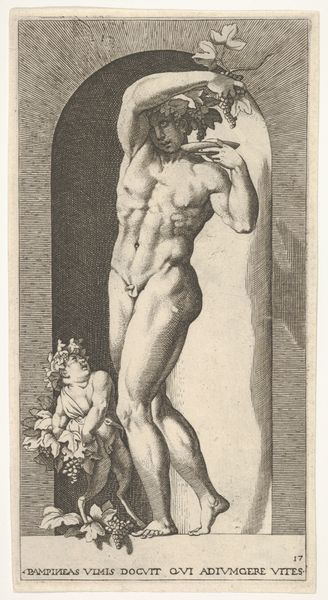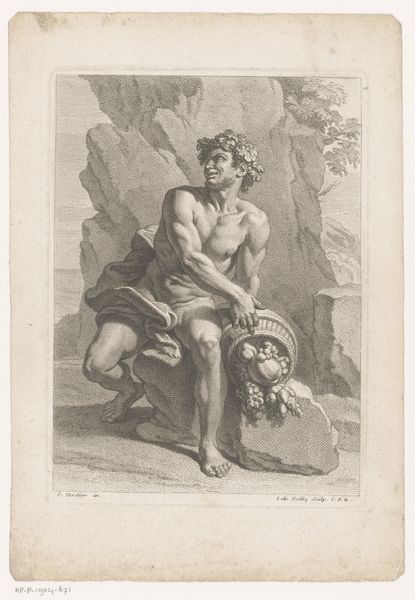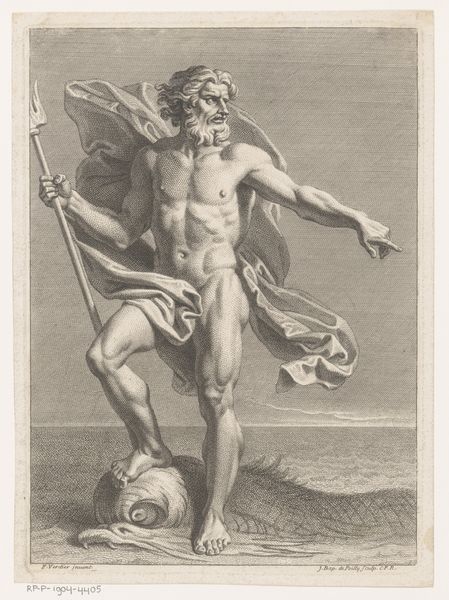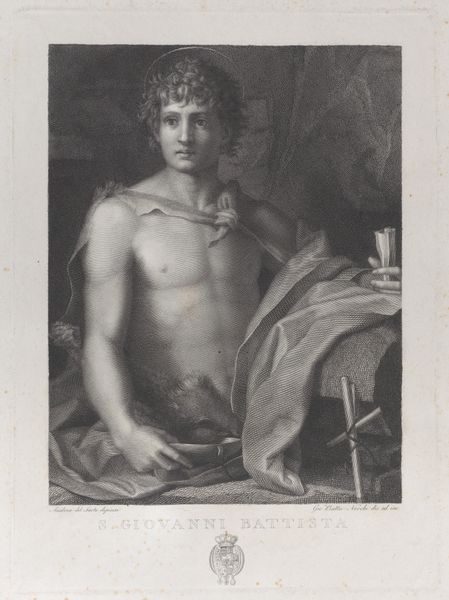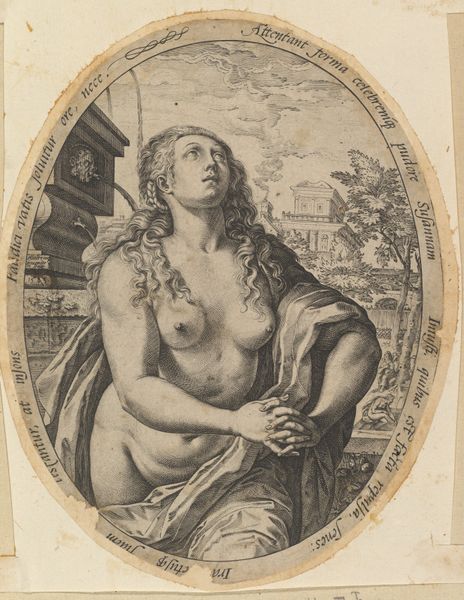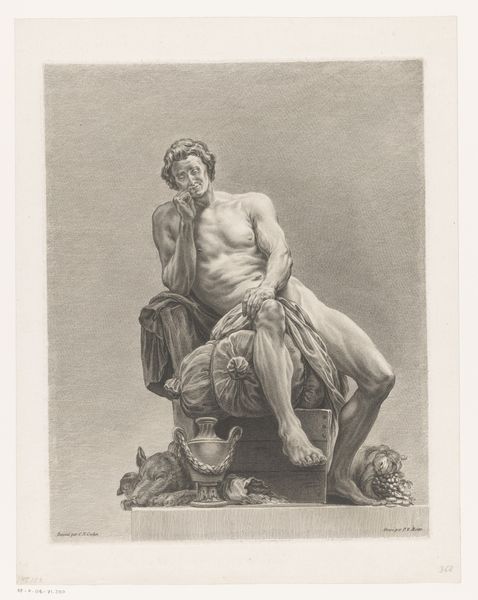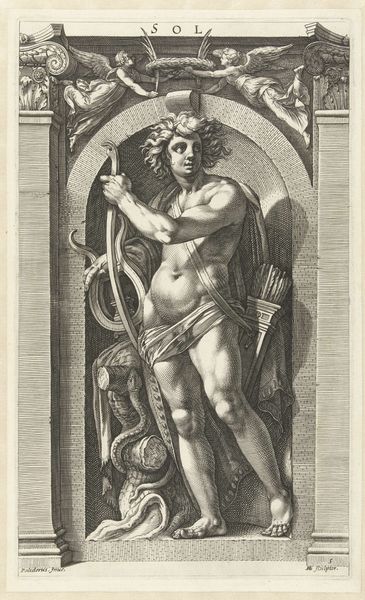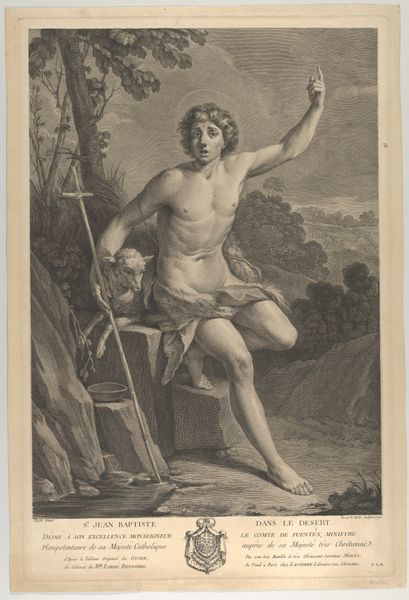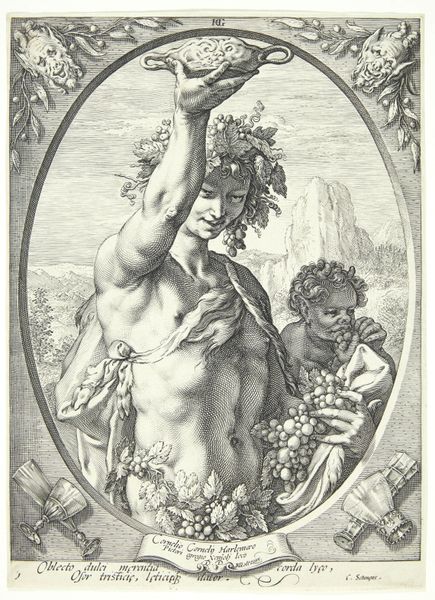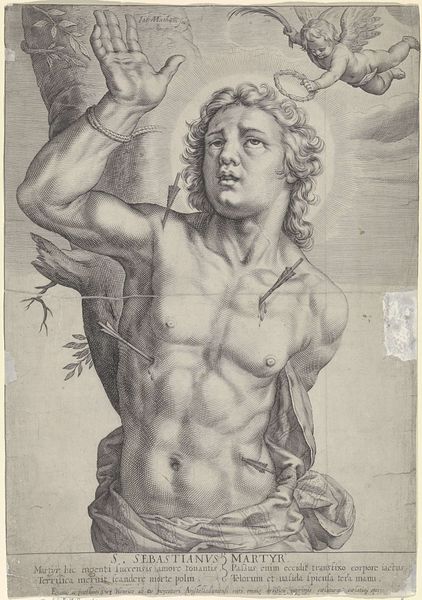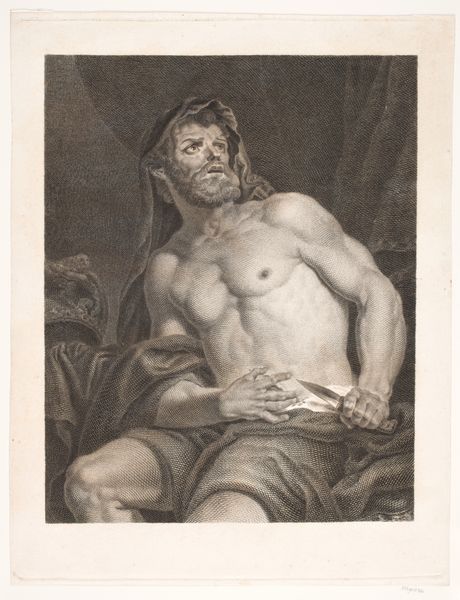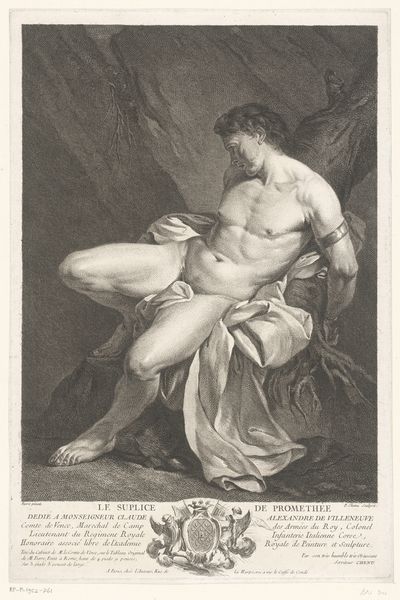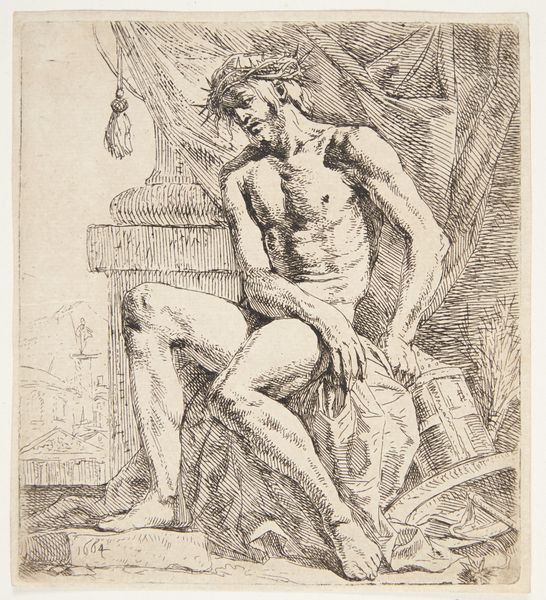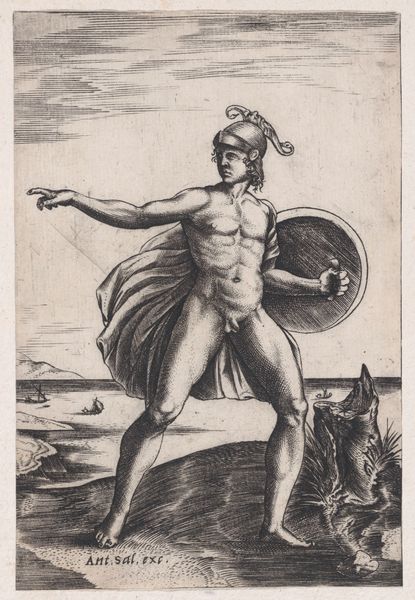
Apollo wearing a mantle and holding a laurel branch and violin 1784
0:00
0:00
drawing, print, engraving
#
portrait
#
drawing
#
neoclacissism
# print
#
classical-realism
#
figuration
#
portrait drawing
#
history-painting
#
academic-art
#
engraving
Dimensions: Sheet: 8 1/8 x 6 1/4 in. (20.7 x 15.8 cm) Plate: 7 3/8 x 5 9/16 in. (18.8 x 14.2 cm)
Copyright: Public Domain
Editor: Here we have Victor Marie Picot’s “Apollo wearing a mantle and holding a laurel branch and violin,” from 1784, an engraving printed on paper. It's really striking, but what jumps out at me is how academic it feels - what do you see in this piece? Curator: It's the process of its making that I find interesting. Engraving, as a reproductive medium, democratized access to images. Consider the labor involved: the engraver, often distinct from the original artist, meticulously translating a painting into a series of lines. Think of the socio-economic implications here – this print allowed wider audiences to “consume” the idea of Apollo, repackaged and ready to be spread. Editor: So, you are more interested in the social aspects of producing the print, as opposed to its aesthetic components. I find it peculiar that Apollo holds a violin instead of his traditional lyre, suggesting a shift in musical taste and craftsmanship. Is that an angle worth considering? Curator: Absolutely. But what dictated those shifts in material production? Think about the rise of instrument manufacturing, the availability of different materials, and the growing market for printed music. All are very intertwined in culture of the time, so it becomes necessary to consider more the economics. Editor: It's interesting to consider beyond the image, to what shaped it and how it got to where it is now. Thank you for pointing out these aspects! Curator: It challenges the concept of authorship and artistic genius, because ultimately it compels us to explore the broader forces at play. This method encourages critical analysis on production within broader art consumption practices.
Comments
No comments
Be the first to comment and join the conversation on the ultimate creative platform.
